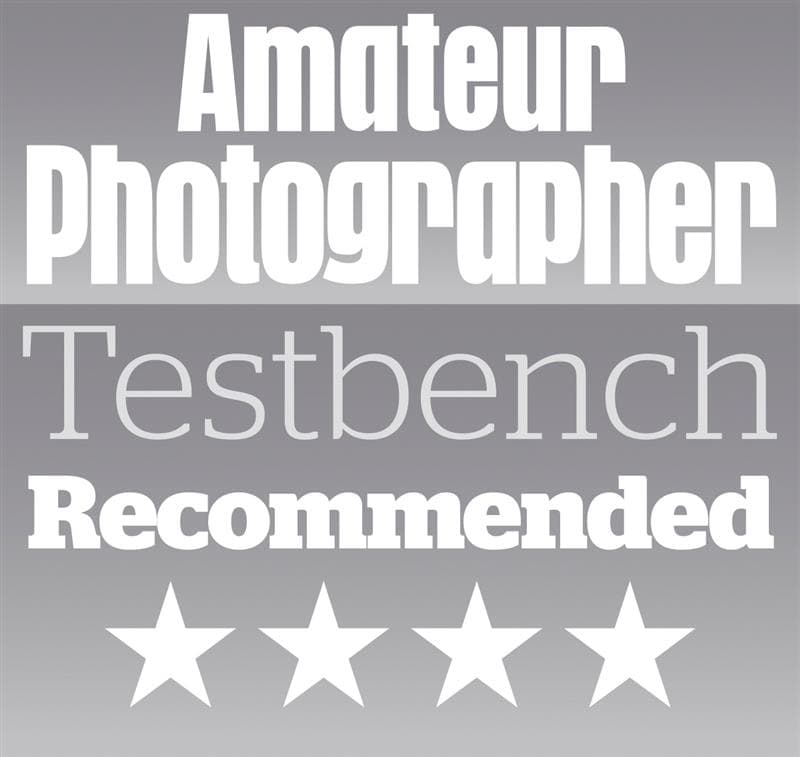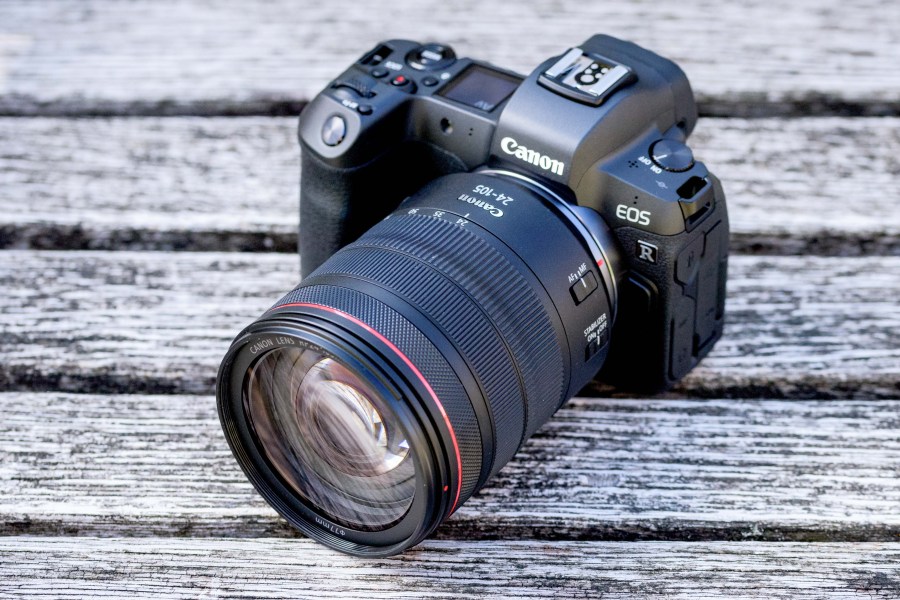Canon EOS R: Introduction
Canon EOS R: at a glance
- £2,349 body only with EF-EOS R adapter
- 30.3-million pixel full-frame CMOS sensor
- DIGIC 8 image processor
- ISO 100-40,000 (expandable to ISO 50-102,400)
- 5,655 selectable autofocus positions
- Single SD card slot
- 4K/30p 4:2:2 10-bit HDMI output with 1.7x crop
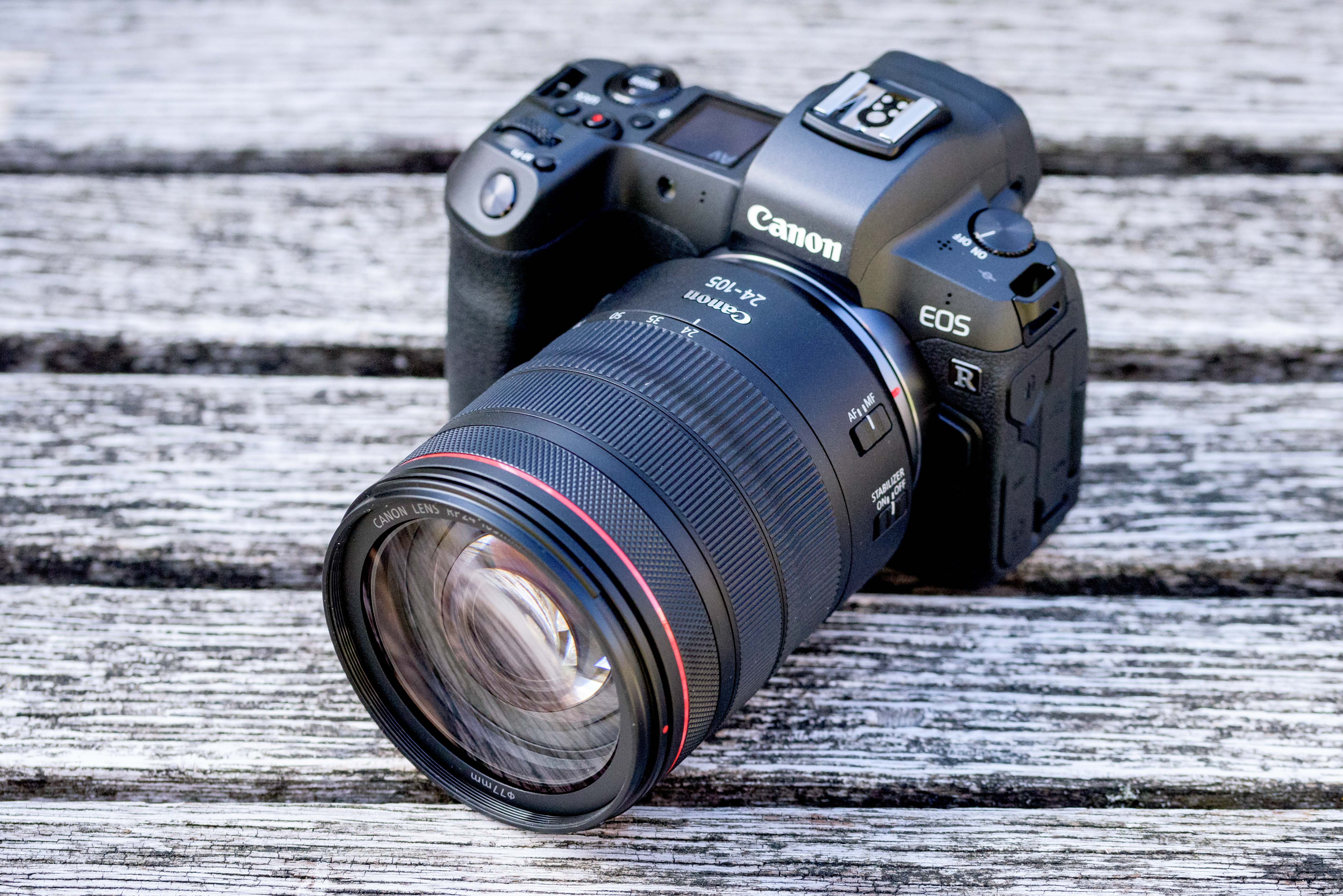
The Canon EOS R paired with the new RF 24-105mm f/4L IS USM (£1,199)
What a difference a year makes. Twelve months ago Sony announced the A7R III into the full frame mirrorless market, which they’ve had almost exclusively to themselves for the last five years. A year down the line and we’ve finally witnessed Canon and Nikon join the full frame mirrorless party, with Panasonic also showing intent to challenge the big guns with their recently announced Lumix S Series that’s due to arrive next year. The future of full frame mirrorless looks very exciting indeed and with more competition in the market, consumers aren’t short of choice.
Canon’s entry into full frame mirrorless has arrived with one camera and four full frame lenses that centre around the company’s all-new RF lens mount. This large-diameter, short back-focus mount has been designed to enable faster focusing and extra flexibility in lens design, which combined with the debut of the EOS R, marks a momentous chapter in the company’s EOS journey. Without going into too much depth about Canon’s history, the EF mount has been around for over thirty years so you could say it’s about time we see Canon shake things up and start to take the full frame mirrorless fight seriously.
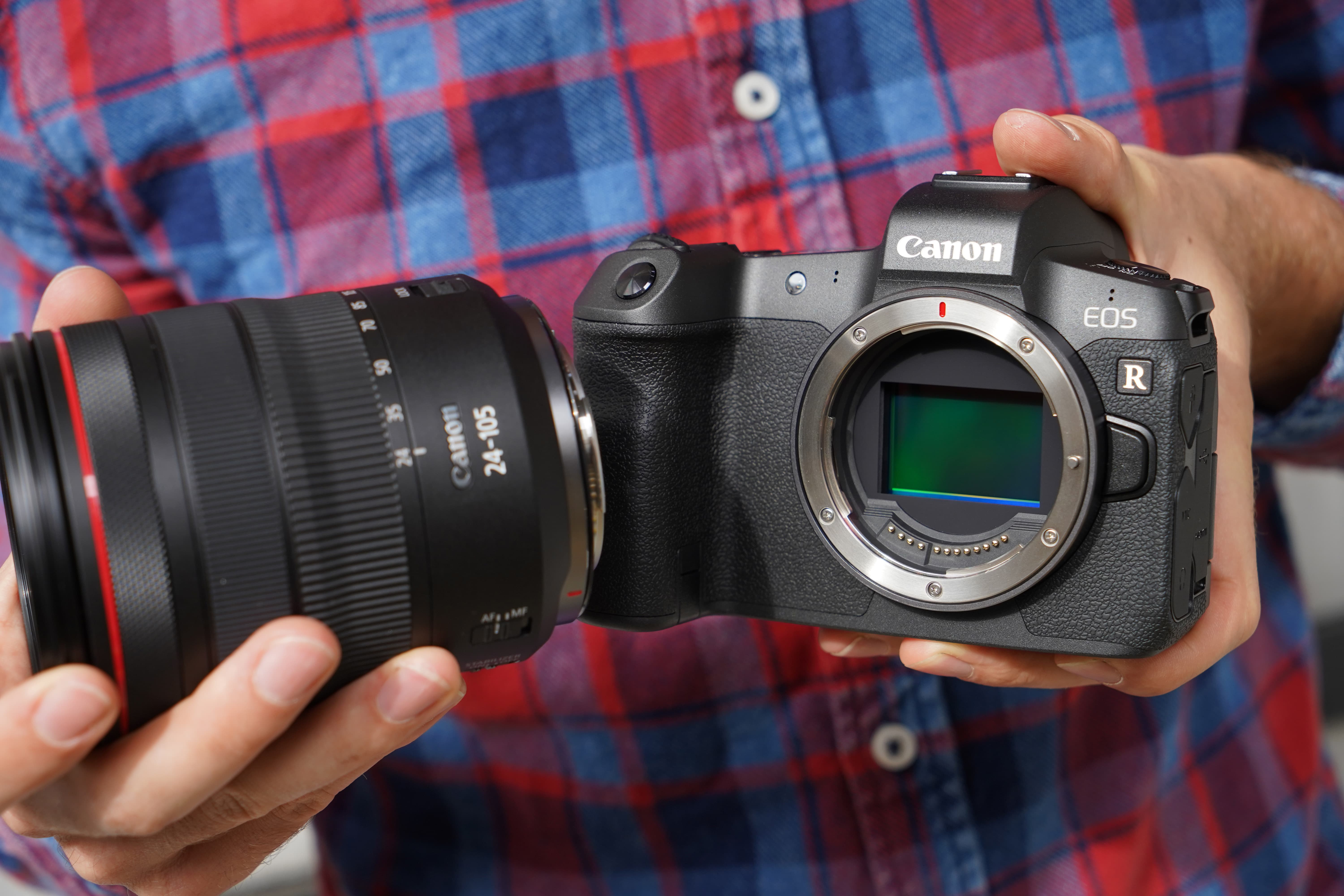
With the RF 24-105mm f/4L IS USM (£1,199) removed, the new RF mount with its 12-pin connection can clearly be seen
Canon users haven’t been backward in coming forward about making their voices heard about what they’ve wanted from the company’s first full frame mirrorless camera. This asks a few questions; has Canon delivered what millions of Canon-faithful users around the world want and have they made the best full frame mirrorless camera possible?
The first camera in a new system always has a lot to answer for, but just as we’ve seen with the excellent Nikon Z7, the EOS R has a great opportunity to make its mark in the full-frame mirrorless market. Before we get stuck into the nitty-gritty, let’s first refresh ourselves with the Canon EOS R’s key features.
Canon EOS R: Features
Canon has taken an alternative approach to Nikon’s entry into the full frame mirrorless market by releasing one single versatile all-rounder as opposed to two cameras built around the same body with different sensors and specifications. The EOS R is the first model in the EOS R system to be built around the new RF lens mount that has a 54mm internal diameter, 20mm flange distance and 12-pin data connection. Behind this mount rests a 30.3-million-pixel full-frame CMOS sensor that we’ve been told is a different chip to the one used within the Canon EOS 5D Mark IV. The pairing of sensor and latest DIGIC 8 image processor provides a sensitivity range of 100-40,000, which like the EOS 5D Mark IV, is expandable to 50-102,400.
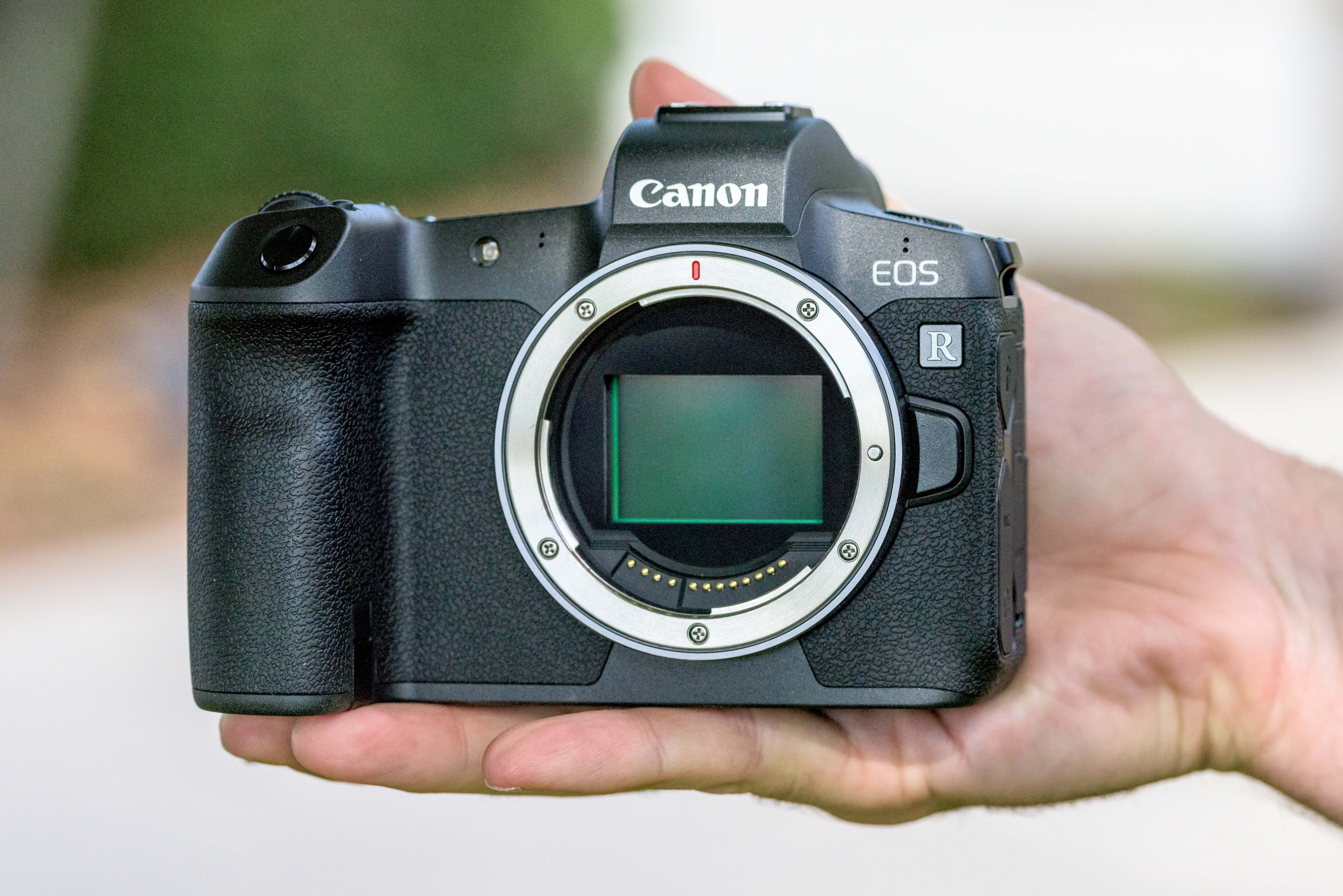
The EOS R offers a sizeable handgrip and looks every bit like an EOS camera from the front
The implementation of the DIGIC 8 image processor allows the EOS R to boast what Canon claims is the world’s fastest autofocus speed of 0.05secs and a maximum continuous burst rate of 8fps with fixed focus. This equates to being 1fps faster than the EOS 5D Mark IV and 1.5fps faster than the EOS 6D Mark II. Switching the EOS R to AF tracking sees this speed reduce to 5fps, but at 8fps users can expect the camera’s buffer to tolerate 100 JPEGs, 78 C-Raw images or 47 Raw files being captured continuously.
As we’ve come to expect, the Canon EOS R integrates the manufacturers sensor-based, phase-detection Dual Pixel CMOS autofocus system that works by splitting all the effective pixels on the surface of the sensor into two individual photodiodes – one for left and one for right. This system is beneficial to photographers and videographers who’d like to focus quickly without having to put up with clumsy focusing in Live View. Better still, the EOS R has the ability to focus down to an impressive -6EV, which should see it perform extremely well when challenged by low-light scenes. On the subject of focusing, the EOS R offers users no fewer than 5,655 selectable AF positions using the touch-and-drag AF function on its Vari-angle screen, covering 88% and 100% of the frame across horizontal and vertical axes.
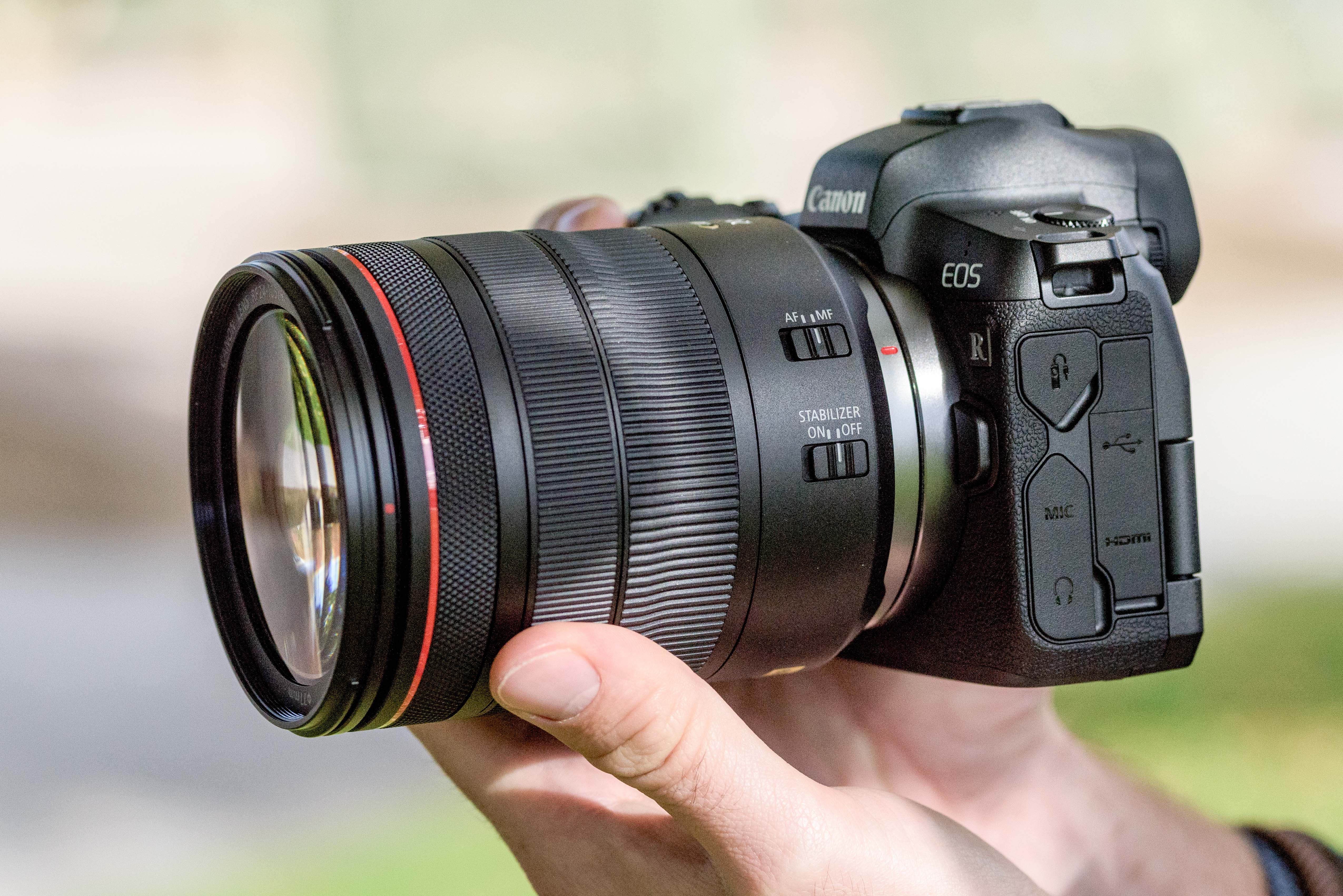
Our EOS R sample was supplied with the RF 24-105mm f/4L IS USM (£1,199) for review
To counteract the rapid on/off pulsing you can get with some artificial lights, the EOS R inherits Canon’s anti-flicker technology that first made its debut in the EOS 7D Mark II and provides exposure compensation across +/-3EV, which is neither as extensive as the +/-5EV range as offered by the Canon EOS 5D Mark IV or Canon EOS 6D Mark II.
While optical stabilisation is featured on some of the new RF lenses (not on the 28-70mm f/2 or the 50mm f/1.2) and many existing EF lenses, the EOS R lacks in-body image stabilisation (IBIS) like its Nikon and Sony rivals. Unlike Canon DSLRs that you’ve been able to quieten but never totally mute, the electronically controlled focal-plane shutter on the EOS R enables completely silent shooting when you’d like to work inconspicuously. It also finally supports USB charging on the go via its USB Type-C port that sits alongside an HDMI mini out port and 3.5mm microphone and headphone sockets at the side.
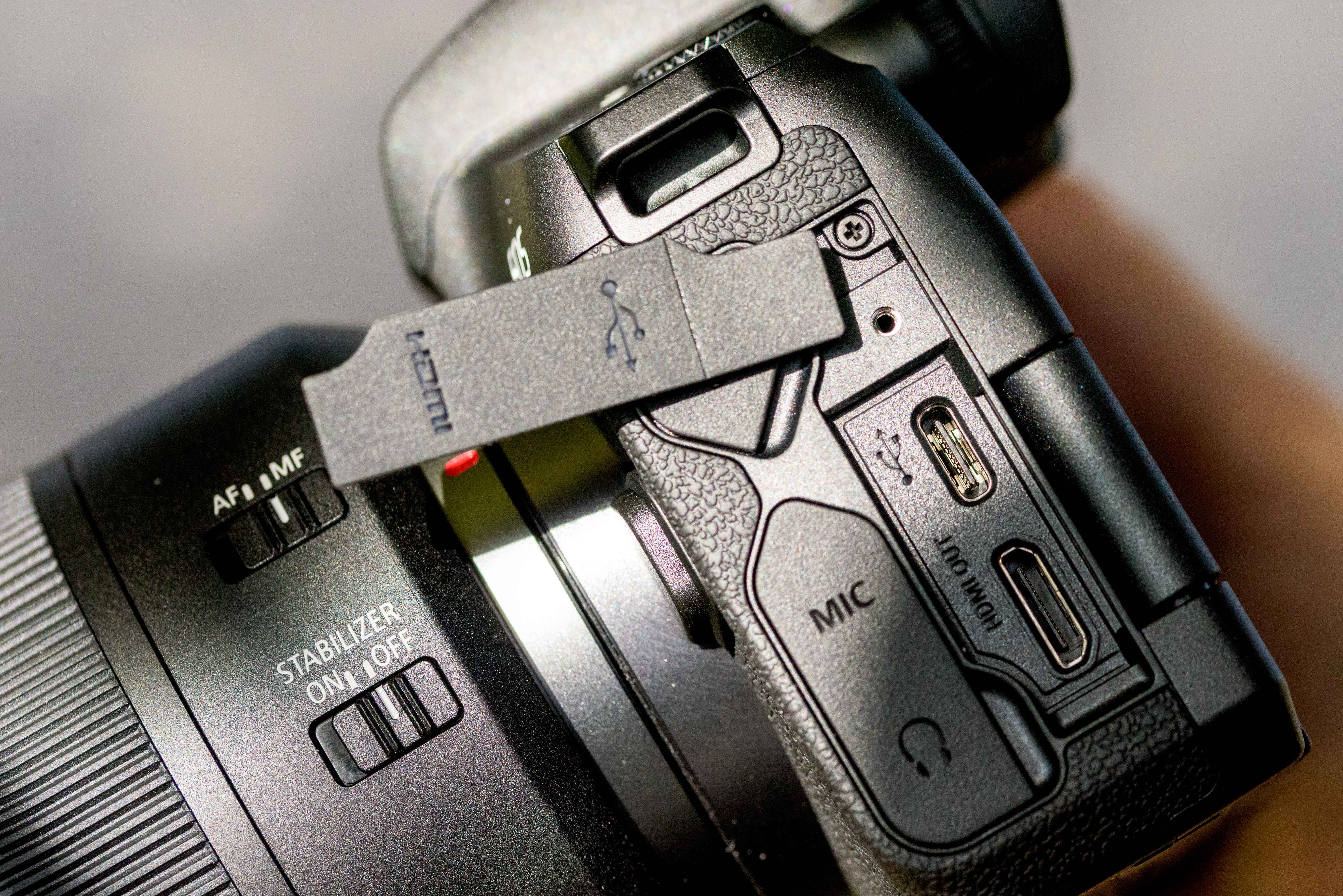
The USB Type-C port allows the EOS R’s battery to be charged on the move
This leads us nicely onto the EOS R’s video capabilities, but again unlike its Sony and Nikon rivals the EOS R falls behind the competition and is unable to deliver full sensor readout 4K video. Just like the EOS 5D Mark IV, the EOS R’s 4K video has a 1.7x crop factor, with 4:2:2 10-bit video output via the HDMI port. Internal 4:2:2 8-bit recording and Full HD 1080p video using the full width of the sensor at up to 60p is available and there’s a 4K frame grab option for anyone who’d like to extract a 8.3-million-pixel JPEG image from 4K footage.
In a similar move to Nikon, Canon has equipped the EOS R with a single card slot, but rather than deciding to go with XQD, the camera accepts SD UHS-II cards. Wi-Fi is built-in too, offering photographers the flexibility to control the camera wirelessly from a smartphone or tablet running Canon’s Camera Connect app. The EOS R doesn’t feature built in GPS functionality like the EOS 6D Mark II, but it can collect GPS data and automatically add it to images via the same app. Bluetooth connectivity can be used to remotely control the cameras at any time, without having to mess around setting up a Wi-fi connection, plus it can also be setup to instruct the camera to fire up Wi-fi when you want to copy images across to your phone.
Canon EOS R Review: RF lenses and EF/EF-S compatibility
Canon has announced four lenses for the EOS R system to date. These include the RF 50mm f/1.2 L USM (£2,349), RF 35mm f/1.8 Macro IS STM (£519), RF 24-105mm f/4L IS USM (£1,199) and the RF 28-70mm f/2L USM (£3,049).

The Canon EOS R and the sensationally sharp RF 50mm f/1.2 L USM (£2,349)
To ensure existing EF and EF-S lens owners aren’t left out, Canon has created three EF-EOS R mount adapters. The most basic EF-EOS R mount adapter (£99) allows more than 70 EF and EF-S lenses to be used with the EOS R and is bundled as part of the body-only kit. There’s also the EF-EOS R control mount ring adapter (£199). This brings the functionality of the control ring found on new RF lenses to anyone wishing to attach an EF or EF lens to an EOS R body. What you’ll want to bare in mind is that the control ring will be positioned considerably further back, which may affect the handling depending on the size and weight of the lens that’s used.

The EF-EOS R mount adapter (£99) allows EF and EF-S lenses to be coupled to the EOS R.
The third mount adapter is aimed at those who may wish to use lenses that might be difficult to add filters to. The drop-in filter mount adapter EF-EF-EOS R with circular polarizing filter will cost £299 and the drop-in filter mount adapter EF-EF-EOS R with variable ND Filter will cost £399. Each of the three adapters are fully compatible with the autofocus and optical stabilisation of the lens that’s attached, whether it be it a Canon lens or third-party alternative.
Canon EOS R Review: Build & Handling
The EOS R offers the size and weight advantages we’re used to when choosing a mirrorless camera over a DSLR. The body weighs 660g with a card and battery inserted – a saving of 230g over the Canon EOS 5D Mark IV and 105g lighter than the EOS 6D Mark II. Canon has managed to uphold a reassuringly solid feel to the body, which partly comes down to it being built around a magnesium alloy chassis.
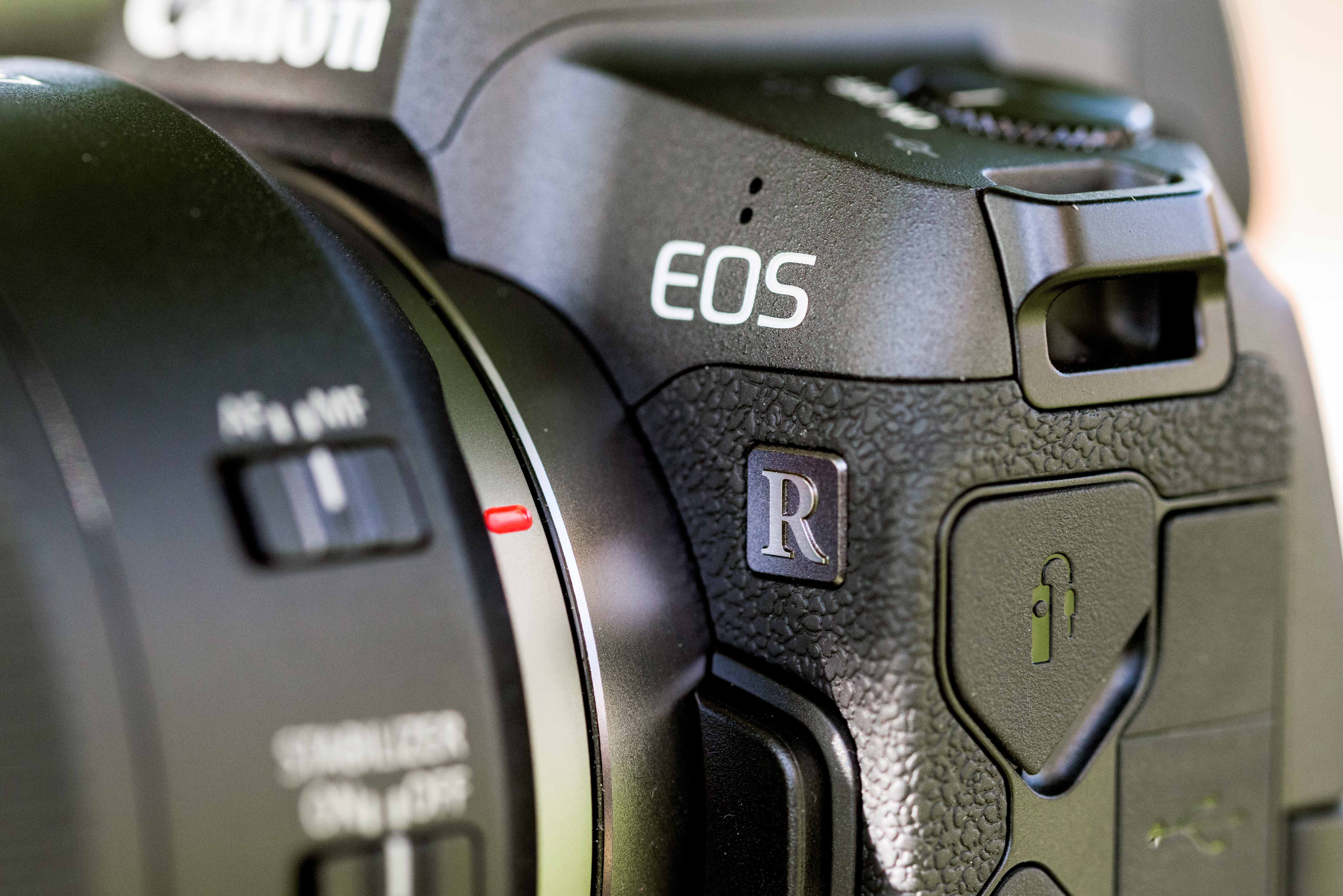
The EOS R feels robust in the hand, but the matte black finish is susceptible to light scratches
To ensure it’s up to the task of enduring heavy and demanding use out in the field, it’s constructed the same weather resistant standard as the EOS 6D Mark II. It doesn’t feel quite the same in the hand as an EOS 6D model and the grippy leather-effect finish doesn’t extend right around the side of the body like it does on the EOS 5D Mark IV, yet it has a sufficiently large grip that allows you to wrap all your fingers around comfortably, which is supported by a sizeable rubberised thumb rest at the rear.
From the front the EOS R has a distinctive Canon DSLR look about it, albeit less thickset than Canon’s EOS 5D-series models. With less space on the top plate it has forced Canon into rethinking the arrangement of buttons and dials, some of which won’t be instantly familiar to existing Canon DSLR users.

The new M-Fn bar features a safety lock to prevent settings being inadvertently changed. This requires you to hold the left end of the bar for approximately a second before it becomes active. The M-Fn will return to being locked after 10 seconds if left idle
There’s no mode dial on the top left shoulder of the body where you’d expect to see one, just a very basic on/off switch. Instead there’s a mode button that’s located inside the rear thumb dial. Below the EOS R’s top plate LCD, just to the left of where your thumb lays to rest, you’ll spot a new customisable multi-function M-Fn bar – the first on an EOS model. Hold your thumb across it and you’ll be prompted to customise various settings to it in shooting and playback modes using slide or touch movements with your thumb. To prevent accidental changes to this Canon has also introduced a safety lock feature that requires users to hold the left end of the bar for one second to temporarily activate it.
Back on the top-plate, the LCD illumination button has two purposes. It can be held down to darken settings against a lighter background or tapped to switch the standard view of exposure variables to an advanced one that displays a broader overview of shooting information. There’s a dedicated movie button to start recording video in an instant and you’re required to hit the mode button followed by the info button when you want to switch between movie shooting modes.
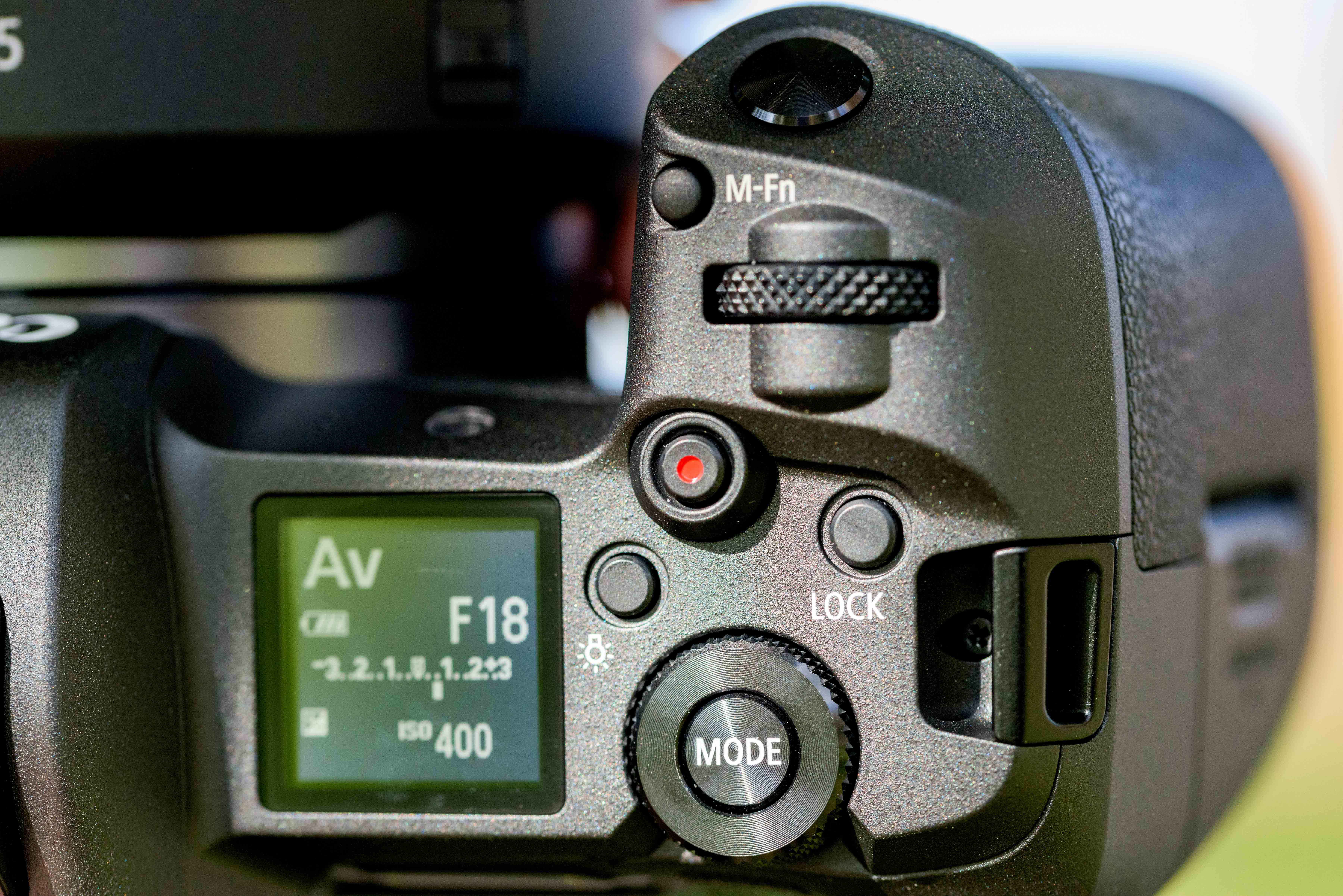
Instead of a mode dial, the EOS R presents a mode button inside the rear dial
Like the EOS 5D Mark IV, the EOS R has a small multi-function (M-Fn) button just behind the shutter that can be customised to as many as 40 different options, but this is best set to the Dial Function setting for immediate access to ISO, drive mode, AF mode, AWB and exposure compensation. The level of customisable control is the best we’ve ever seen on an EOS camera and there’s the advanced option to segregate customised settings between stills and movie modes. The customisable control ring at the front of RF mount lenses is a clever idea that’s been executed very well. It brings aperture, shutter speed, ISO or exposure compensation control directly to your left hand supporting the lens, leaving your right hand to focus on controlling the rear dial and shutter button.
One of the disappointments on the EOR is the lack of a multi controller to allow the AF point to be shifted intuitively around the frame. In this respect it’s rather like the EOS 6D Mark II, but unlike this enthusiast DSLR, the EOS R’s four-way directional pad isn’t set within a rotating rear command wheel, making it little different to the basic four-way directional pads you find on entry-level DSLRs like the EOS 200D.
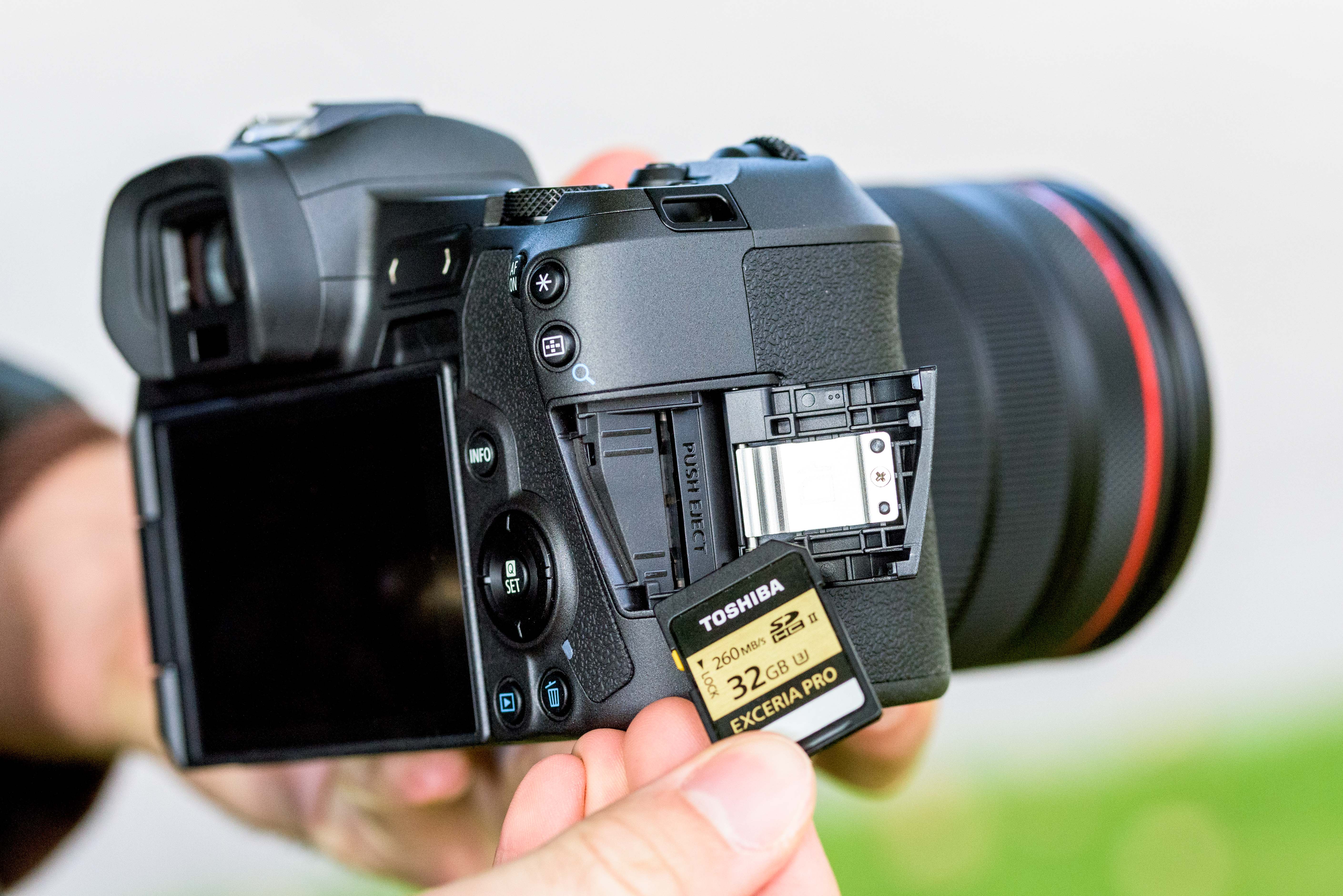
Just like the Canon EOS 6D Mark II, the EOS R features a single card slot at the side
In an attempt to make up for these omissions Canon has introduced the M-fn bar and its touch and drag AF function that lets you shift the AF point with your thumb on the screen when the camera is raised to your eye. This is most effective when the positioning method is set to absolute rather than relative, but even with the active touch area assigned to the top right of the screen it’s not easy shifting the AF point to the edge of the frame without handling being compromised.
One thing in the EOS R’s favour is that touch and drag AF isn’t affected when the screen gets wet and our tests showed that it was no less responsive with water droplets on the screens surface than when it was dry. There’s the option to use the EOS R’s AF point select button in combination with the four-way directional pad too, but when you’re under pressure this method simply isn’t fast enough and can result in shots and opportunities being missed.
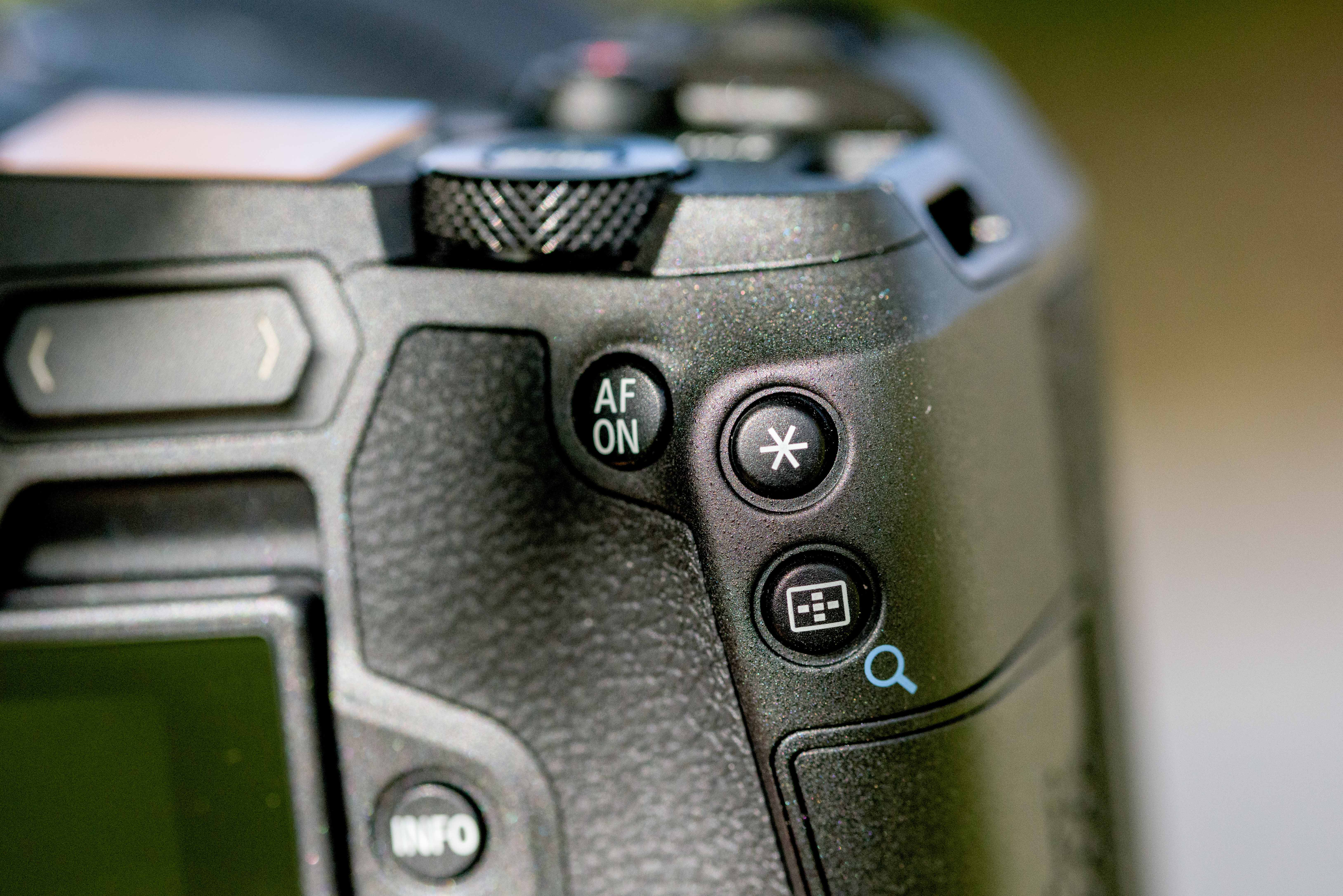
A closeup of the thumb rest showing the AF-ON, AE-L and AF point select buttons alongside
Coming from a DSLR with a multi controller to the EOS R without does feel like a backward step. It underlines that the EOS R as more of an enthusiast friendly model than a camera that’ll satisfy semi professionals and the working pro who demand the very best ergonomics and would prefer to have two card slots as opposed to one for backup.
Canon EOS R Review: Viewfinder & Screen
At the rear of the EOS R you get a 0.5-inch OLED EVF boasting an impressive 3.69-million-dot resolution with a 0.76x magnification. It has a responsive eye sensor that switches the feed between screen and EVF in an instant, with white on black exposure information, battery life and shooting mode clearly displayed below the preview image. There are two performance modes – power saving and smooth, but for the fastest refresh rate and finest viewing experience you’ll want to keep it set to the latter. The viewfinder display format can also be changed from its default Display 1 setting to Display 2 if you’d prefer a larger back border around the edge, which may be useful for wearers of glasses who struggle to see into the far corners of the frame.

There’s a soft rubber eye cup to cushion the viewfinder against your eye
With regard to performance, it’s the best electronic viewfinder we’ve ever used on a Canon camera. It’s exceptionally sharp and offers a faithful representation of how an image will appear, with the benefit of accurately showing exposure adjustments as they’re made and any changes in depth of field at both large and small apertures. Hit the info button and you can call up more shooting information on either side of the frame or view the electronic level at the same time as the histogram. Unfortunately, though, it’s not possible to view these two shooting aids independently via the EVF. You can view the histogram independently on the screen, but as soon as the camera is raised to your eye the electronic level also appears.
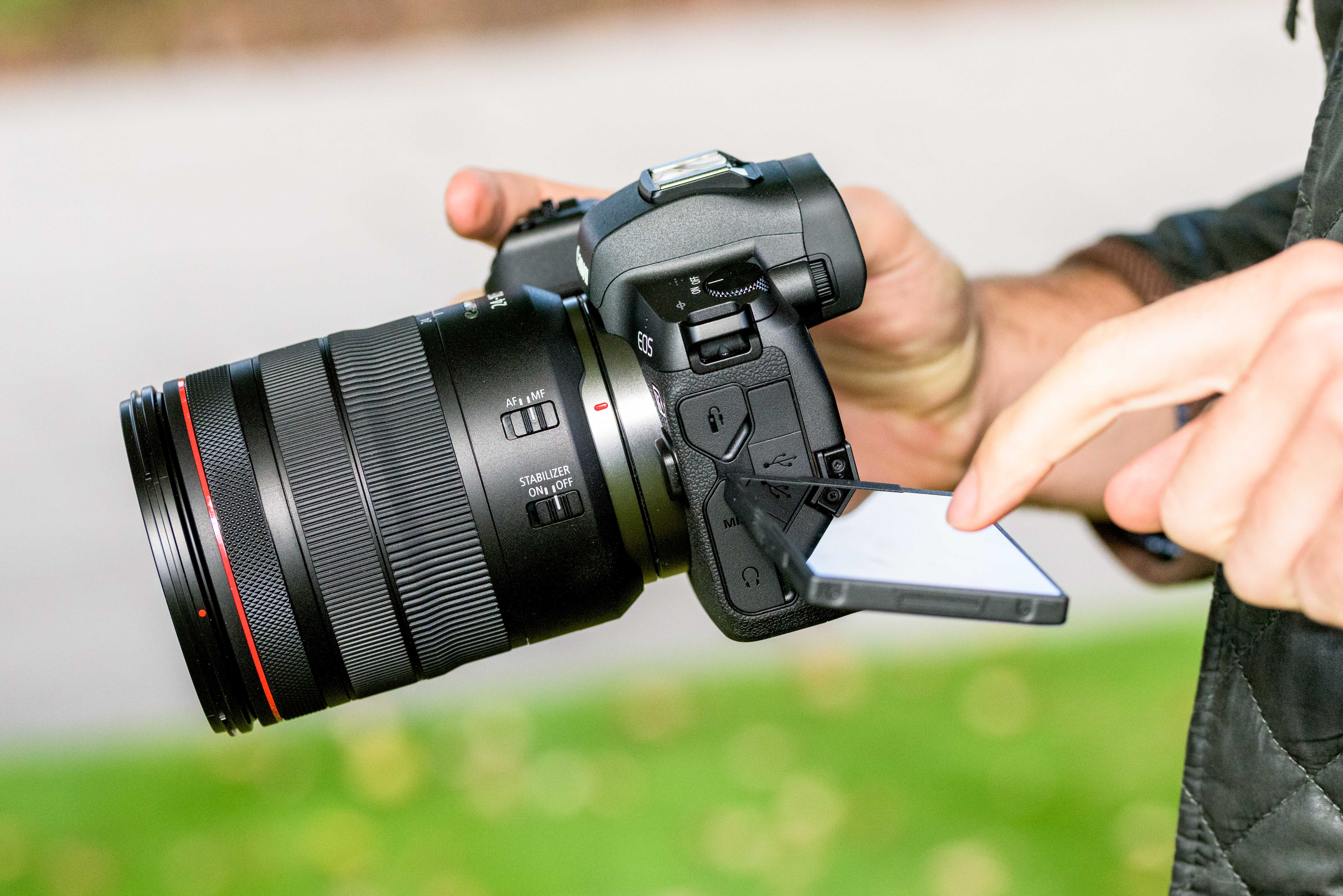
The touchscreen on the Canon EOS R is excellent and has many different uses when you’re shooting and reviewing images
Canon is well known for its excellent touchscreen displays and the EOS R upholds this reputation. The 3.15in, 2.1-million-dot screen is the fully-articulated type, allowing it to be pulled out a tilted to almost any angle. It’s more manoeuvrable than the tilt-only units on Nikon’s Z-series cameras, making portrait format shooting a breeze, especially from low or high angles. It displays accurate colour that’s consistent with the EVF and is incredibly responsive to light touches, making navigation of the main menu nice and quick if you don’t use the four-way controller. If you’re more inclined to use the EVF, it can also be flipped in on itself to keep it well protected.
Canon EOS R Review: Autofocus
The EOS R’s staggering number of 5,655 selectable autofocus positions makes it one of the most advanced offerings of any mirrorless camera on the market. Having the ability to shift the AF point so extensively across the frame with the choice of two different AF frame sizes (normal or small) is great, but as already mentioned, what it really lacks is a joystick to shift the AF point around the frame with your thumb.

Servo AF, burst shooting (5fps) and remote shooting via the Canon Connect app were all put to good use to capture this image of a steam train exiting the tunnel Canon EOS R, Sigma 150-600mm f/5-6.3 DG OS HSM | Sports with EF-EOS R adapter, 1/1400sec at f/6.3, ISO 1600
Users are given access to AF area and AF modes from the quick menu and if the M-Fn button is set to its Dual Function setting it’s possible to switch between One Shot and Servo AF in an instant. If users want a more immediate way of changing the AF area this can be assigned to the M-Fn bar. The real highlight of the EOS R’s autofocus is its ability to acquire focus in light levels as low as -6EV. The way it locks on and focuses hastily in dark conditions is remarkably impressive and will be popular with photographers who frequently shoot in poor lighting conditions or under the cover of darkness.
Testing the various AF area modes in combination with Servo AF demonstrated that the AF is fast, silent and accurate just as you’d expect. The disappointment when shooting with AF tracking is that the burst drops from 8fps to 5fps. Though I did manage to capture some good shots of moving subjects, high-speed action and sport isn’t the EOS R’s forte.

The EOS R’s Eye Detection AF didn’t immediately identify this railway engineman in the frame Canon EOS R, EF 85mm f/1.4L IS USM with EF-EOS R adapter, 1/1250sec at f/1.8, ISO 800
Trying out the EOS R’s Eye AF system, which is enabled as part of the Face Detection AF option, revealed that it only works in AF-S mode and not AF-C. It’s reasonably effective when a face is fairly large in the frame, but less so when shooting people from distance. There were a few instances during testing when Eye AF didn’t identify an eye in the frame. From my experience it doesn’t have a patch on Sony’s more accurate and reliable Eye AF functionality.
Canon EOS R Review: Performance
Existing Canon users who own EF and EF-S lenses will be intrigued to know how they work with the EOS R via Canon’s new EF-EOS R mount adapters. Our review sample was supplied with the most basic of the three EF-EOS R mount adapters, which was used to couple EF and EF-S lenses as well as a variety of third-party EF-mount lenses kindly supplied by Sigma.
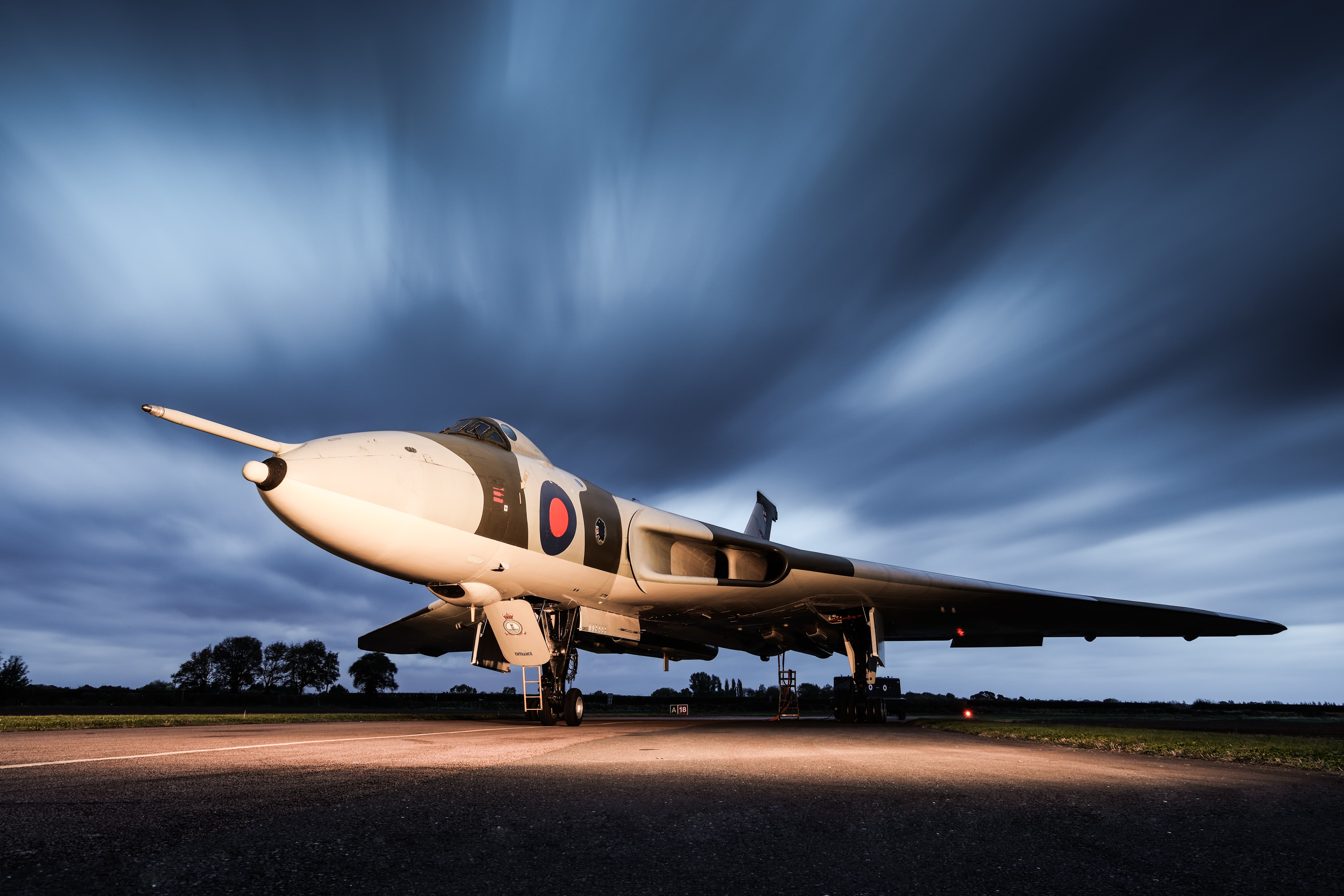
Canon EOS R, Canon RF 24-105mm f/4 L IS USM, 30secs at f/11, ISO 50 (With thanks to Timeline Events)
Tests confirmed that all lenses performed and focused no differently than if they were couple to a Canon EOS DSLR, with the EOS R automatically going about its business of producing cropped 11.6-megapixel images that match the smaller image circle of EF-S optics. It’s also worth pointing out that Canon’s EOS R adapters are built to withstand professional use and are weather sealed against dust and moisture much like the EOS R body.
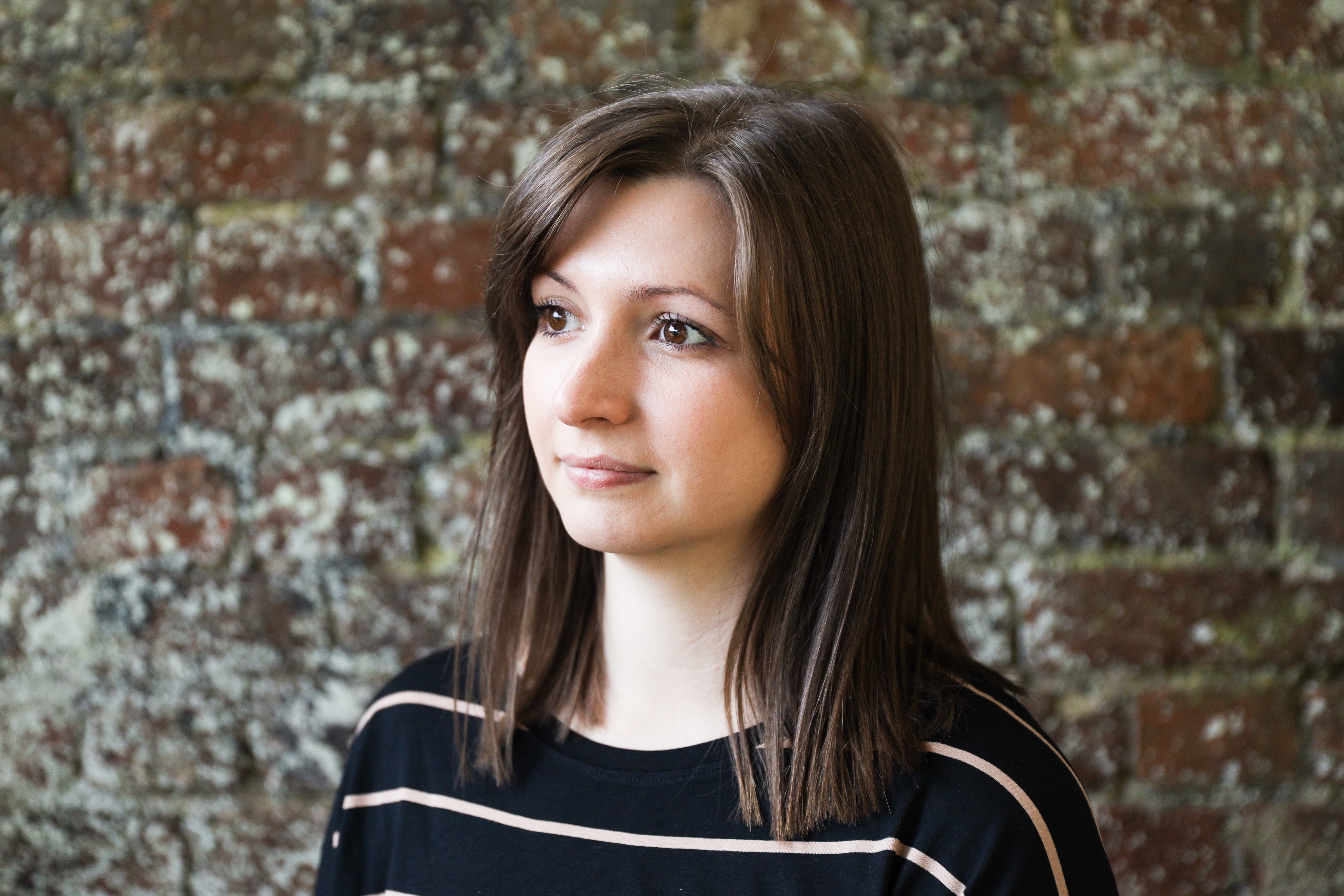
Canon EOS R, Canon EF 24-70mm f/2.8L II USM with EF-EOS R adapter, 1/1000sec at f/2.8, ISO 400
Mirrorless cameras are known for being thirstier than DSLRs when it comes to battery consumption and it’s noticeable that the EOS R gets through its power a lot faster. In autumn temperatures, I managed to shoot around 400 shots on a single charge, whereas with cameras like the EOS 6D Mark II we’re used to shooting closer to 1200. There’s the option to check remaining power as a percentage from the main menu and you get some good power saving modes to preserve battery life, but users shouldn’t expect a single battery to be enough for a full days shooting. With this in mind, EOS R users will either want to carry spares, look to invest in the BG-E22 battery grip or top up as they go by taking advantage of in-camera charging via the USB-C port.
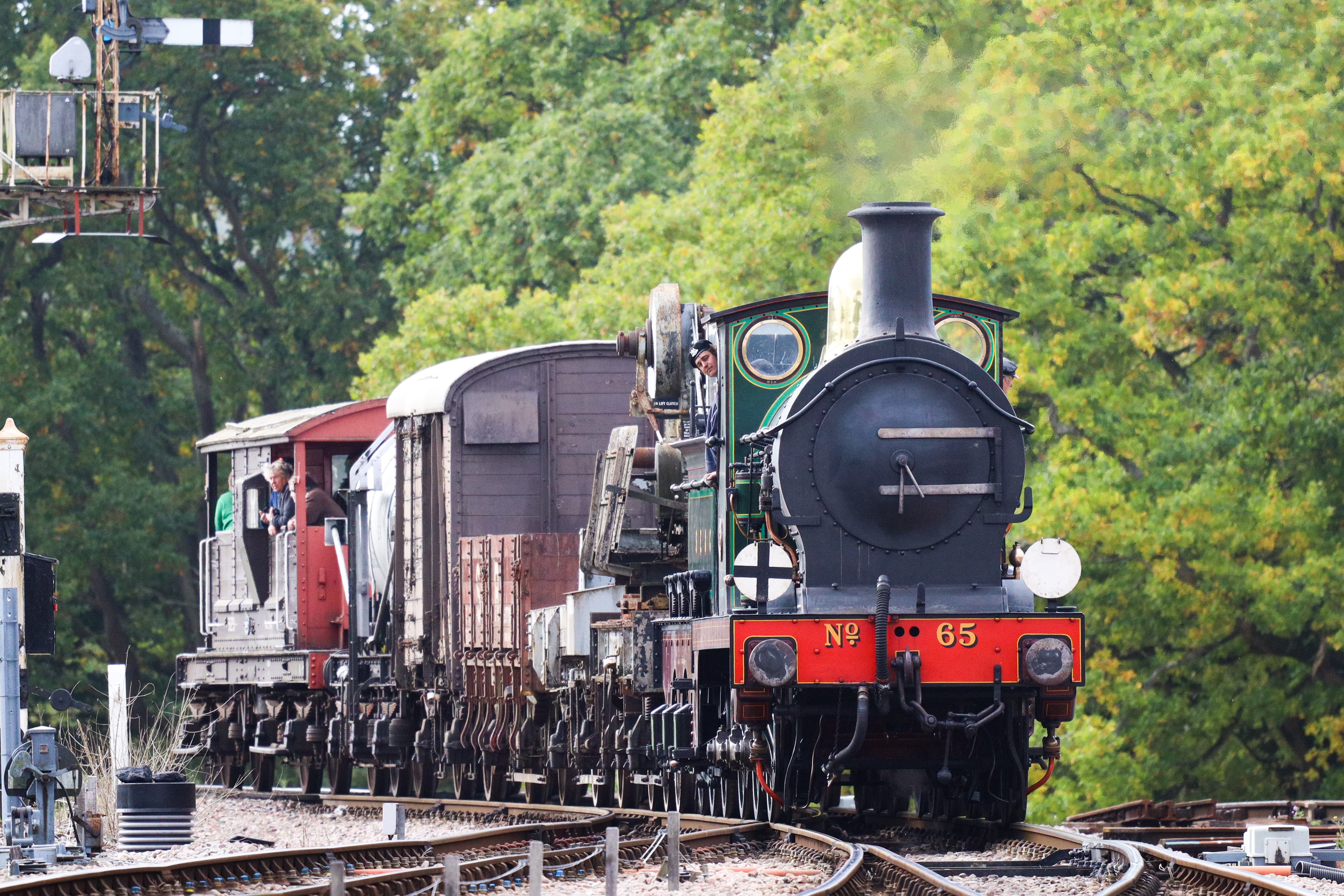
Canon EOS R, Sigma 100-400mm F5-6.3 DG OS HSM | Contemporary with EF-EOS R adapter, 1/1250sec at f/6.3, ISO 1600
With evaluative metering being linked to all autofocus points, the EOS R can be trusted to analyse scenes and expose for them correctly. Users will feel confident using the camera in its evaluative metering mode, but for scenes that are harder to expose there’s always spot, partial and centre weighted average modes to choose from.
Another interesting addition is the introduction of an Flexible-priority AE mode, or Fv mode for short. This is similar to Program AE or ‘P’ mode, with the added benefit that it allows you to nip in and adjust ISO, shutter speed, aperture or exposure compensation without having to switch to a different shooting mode. The EOS R’s rear dial is used to toggle between the above variables and the top dial adjusts the particular setting. Settings that are underlined indicate that they’re being controlled automatically by the camera whereas those that are not reveal that the user is in control of manually adjusting the setting in question.

Canon EOS R, EF 24-70mm f/2.8L II USM with EF-EOS R adapter, 1/400sec at f/5.6, ISO 100
Like we’re used to seeing from Canon, the EOS R proved to be a reliable performer during the time we used it and the way it delivers punchy images, faithful colour and strong results at high sensitivity settings makes it versatile for those who like to shoot a variety of different subjects.

Canon EOS R, RF 50mm F1.2 L USM, 1/200sec at f/2, ISO 200
Although it performs very much like a Canon camera, it must be stressed that the operation and control is very different to Canon’s traditional DSLRs, so much so, it’s not a camera Canon DSLR users will pick up and feel at ease with straight away. The EOS R’s idiosyncrasies take time to learn and although having an improved level of customisation is a good thing, not having dedicated buttons for things such as ISO, drive mode and AF mode does make it feel somewhat peculiar the first few times you use it. I can imagine many Canon users feeling lost when they pick up the EOS R, just as I did at the start. You do gradually get used to working with it, but my lasting impression of the EOS R’s usability is that it could be made to feel more intuitive.
Canon EOS R Review: Image quality
The EOS R’s sensor doesn’t throw up any great surprises and behaves similarly to the 30.4-million-pixel sensor as used within the Canon EOS 5D Mark IV. Although it doesn’t resolve the same level of super fine detail as Sony’s A7R III and Nikon’s Z7, both of which feature 42MP and 45MP sensors, there’s nothing to say Canon won’t release a high resolution model in the future. Who knows, this might be the next release in the EOS R series.
Users will find the EOS R’s raw files provide excellent latitude when it comes to returning detail to shadowed regions and can confidently push high into the ISO range before noise severely degrades image quality. Adobe didn’t support the EOS R’s raw files at the time of testing so we used Canon’s Digital Photo Professional software (v4.9.0) to convert our files before analysing them.
Canon EOS R Review: Resolution
The EOS R’s 30.3-million pixel sensor resolves a maximum of 3,600l/ph between ISO 100 and ISO 400, which drops to 3,400l/ph by the time ISO 800 is reached. Detail remains high when you encroach ISO 1600 and ISO 3200, with 3,000l/ph being resolved right up to ISO 6400. As the sensitivity is pushed higher, fine detail starts to get lost with the introduction of noise, though the sensor shows it’s still more than capable of resolving 2,800l/ph up to its sensitivity ceiling of ISO 40,000 before expansion. Pushing to its H1 (ISO 51,200) and H2 (ISO 102,400) settings sees the level of detail drop to 2,600l/ph and 2,400l/ph respectively.
Below we show details from our resolution chart. Multiply the number beneath the lines by 400 to give the resolution in lines per picture height (l/ph).

EOS R Resolution ISO 100
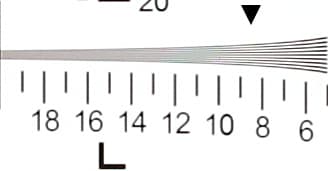
EOS R Resolution ISO 800
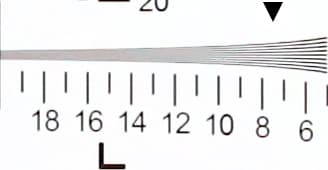
EOS R Resolution ISO 6400
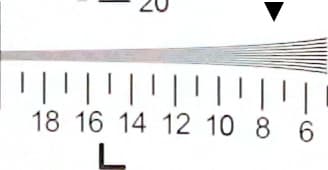
EOS R Resolution ISO 25600

EOS R Resolution ISO 51200
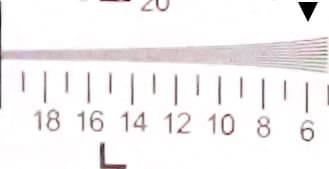
EOS R Resolution ISO 102400
Canon EOS R Review: Noise
The noise performance from the EOS R is very good and our detailed inspection of raw files captured through the sensitivity range displayed clean noise-free results between ISO 100 and 800. When you push to ISO 1,600 and inspect images closely you’ll start to see luminance noise appearing, which becomes more obvious when you push to ISO 3,200 and ISO 6,400.
ISO 3200 is very useable and so is ISO 6400 with a little noise reduction applied in post. Users will find that they can shoot at ISO 12,800 too, but this is the upper limit we’d want to push the sensitivity to on a regular basis. Colour saturation remains high up to ISO 25,600 and beyond this point you’ll notice that colours become slightly muted. The extended H1 (ISO 51,200) and H2 (ISO 102,400) settings should be avoided at all costs.

Canon EOS R, Raw ISO 100
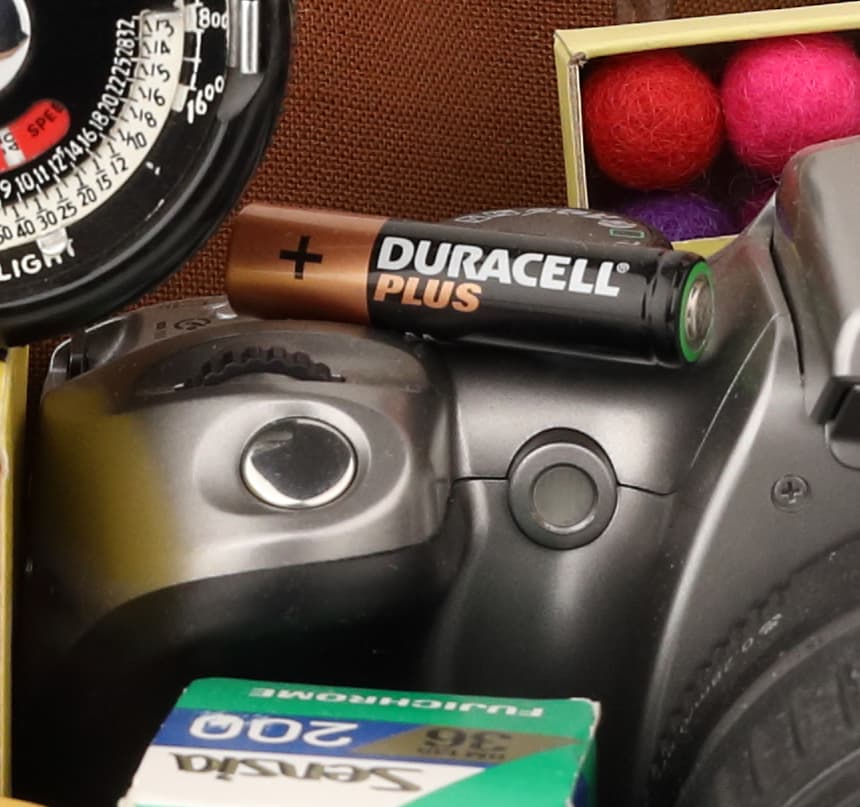
Canon EOS R, Raw ISO 800

Canon EOS R, Raw ISO 6400
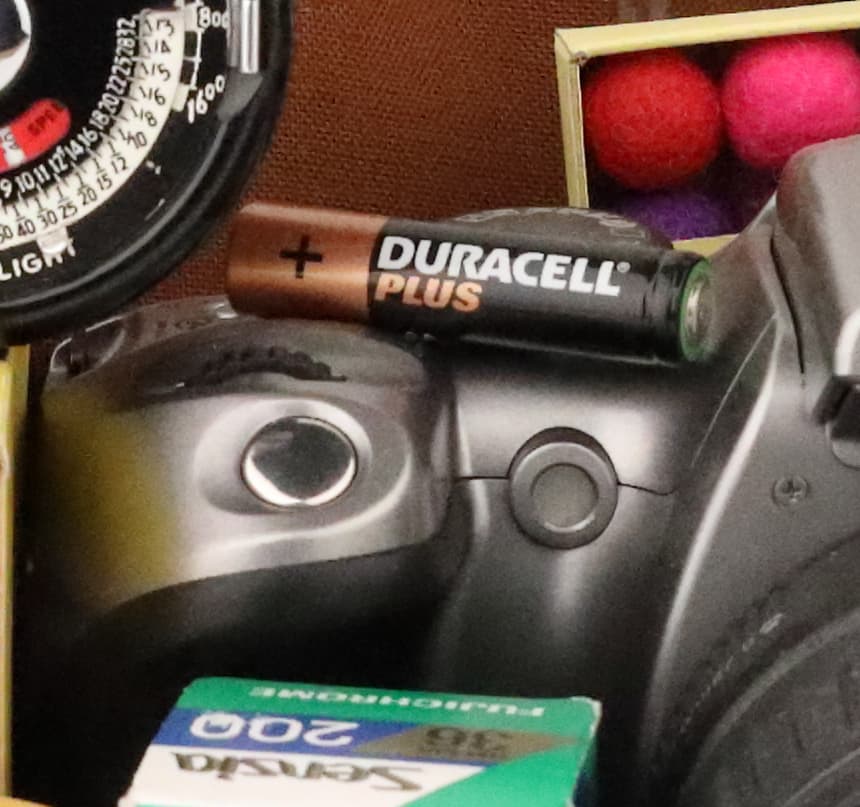
Canon EOS R, Raw ISO 12800
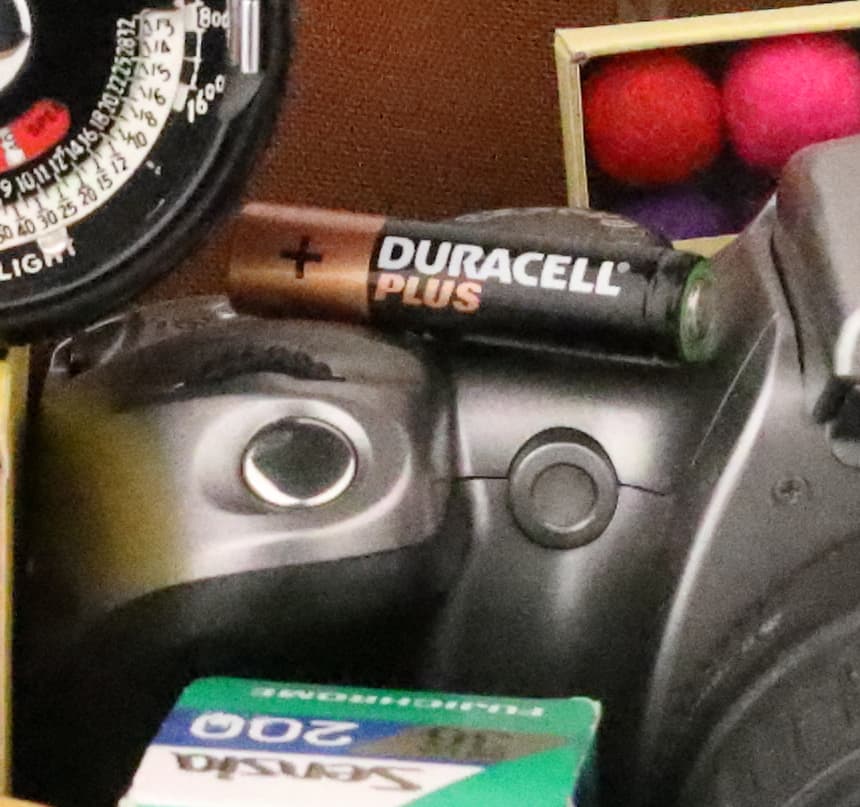
Canon EOS R, Raw ISO 25600
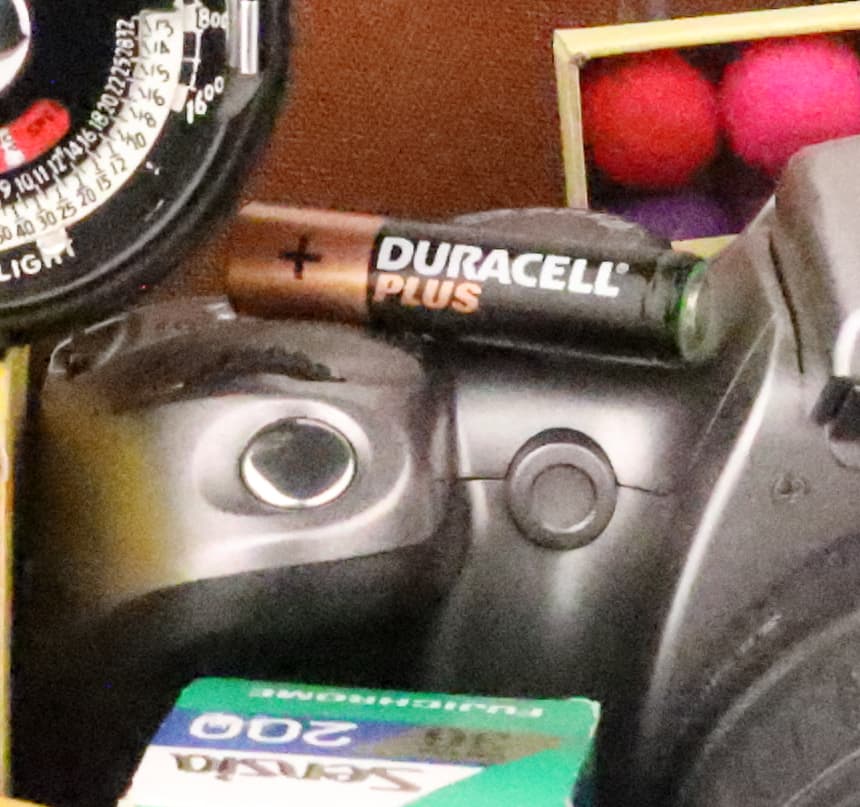
Canon EOS R, Raw ISO 51200

Canon EOS R, Raw ISO 102400
Canon EOS R Review: Verdict
The EOS R’s arrival has been greeted with a great amount of interest from Canon users around the world. Those hoping for a miniaturised version of the company’s popular EOS 5D series haven’t had their wish come true. Instead of targeting the high-end enthusiast and semi-pro user, the EOS R is more like an EOS 6D Mark II in the way it feels like an entry point into full frame photography. The EOS R goes up against rivals such as Sony’s A7 III (£1,999) and the Nikon Z6 (£2,099), but priced as at £2,349 (body only), it’s the most expensive of these three and has its work cut out trying to justify this extra expense.

AP’s Michael Topham put the EOS R to the test over a couple of weeks
Touching on the positives, the EOS R delivers stunning images that are on par with those you’ll get out of the EOS 5D Mark IV. It also focuses responsively in challenging low-light scenarios, offers the best EVF we’ve used on a Canon camera and is built around a strong body that feels great in the hand over prolonged spells of shooting – something that’s needed for the sizeable lenses Canon has created so far for the EOS R system. The introduction of the customisable ring on the new lenses is welcomed too and it’s encouraging that EF/EF-S optics and third-party lenses perform so well with the EF-EOS R mount adapters.
The above points are sadly undone by its lack of IBIS, mode dial, AF joystick and unconventional arrangement of buttons and controls. Add the single card slot, questionable M-Fn bar and 4K video limitations to this and you walk away from using the EOS R feeling like it has room for improvement.
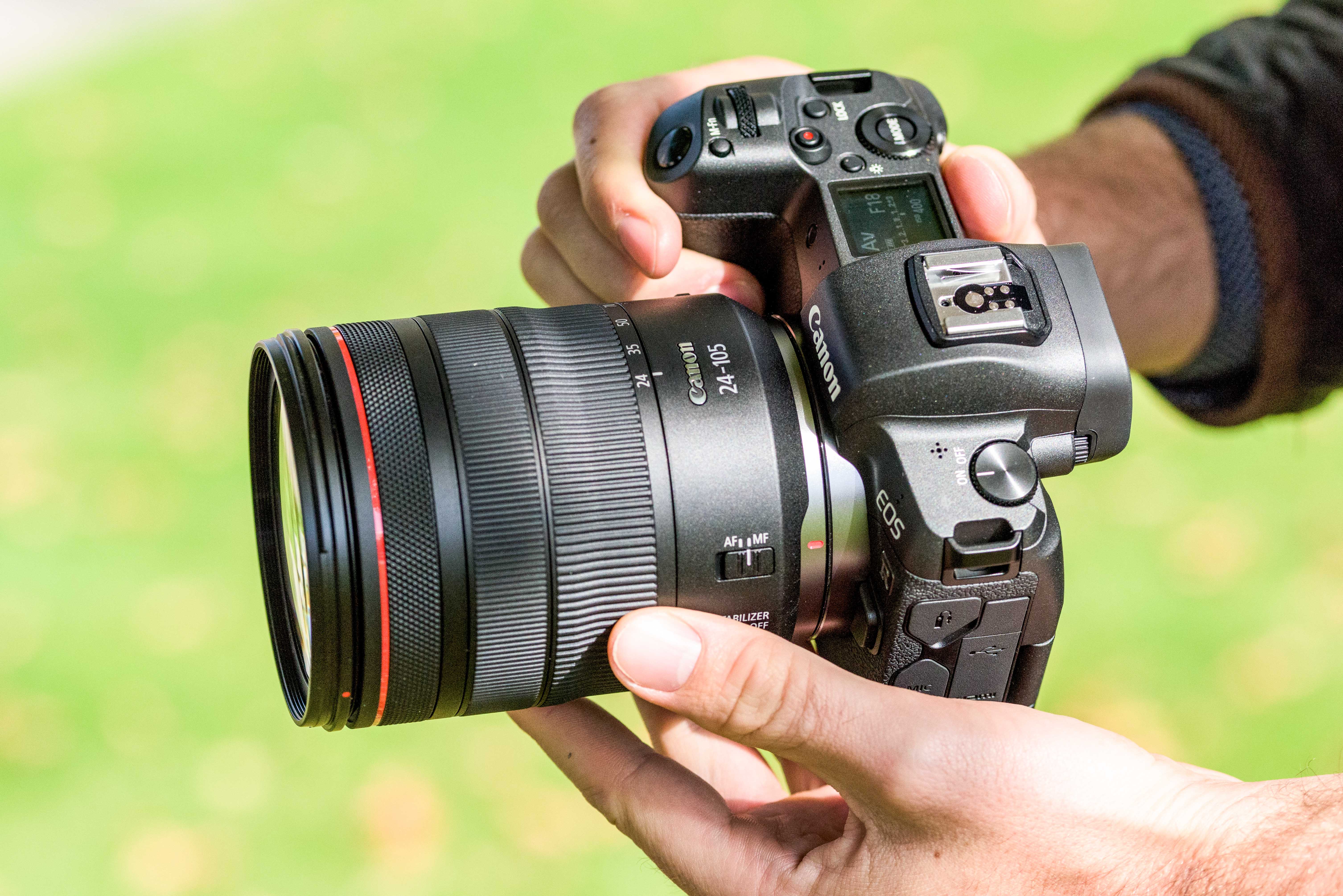
The Canon EOS R paired with the RF 24-105mm f/4L IS USM
Canon had a great opportunity to make the EOS R one of the best cameras they’ve ever made and shake up the full-frame mirrorless market with something truly special. Although this first iteration in the new series might not be perfect or as compelling as its Nikon and Sony competition, it’s represents a start in the full frame mirrorless market for Canon. It’ll be interesting to watch the EOS R system evolve over future years and we’re keen to know how the second model might differ to the first.
